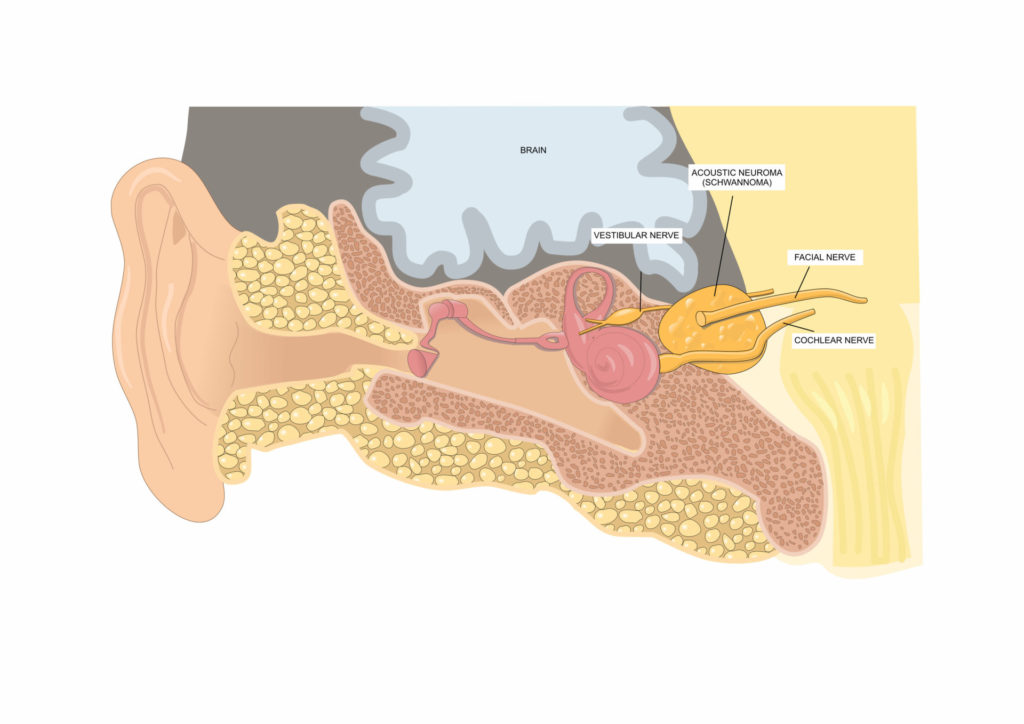Hearing loss, even in its mildest form, can have a significant impact on our daily lives, the way we communicate and how we feel about ourselves. While it may seem inconsequential at first, untreated mild hearing loss can potentially worsen over time, leading to more profound difficulties in communication and overall quality of life.
In this blog, we’ll delve into the nuances of mild hearing loss, explore the factors that can exacerbate it, and discuss preventive methods and the need for hearing aids.
 Understanding mild hearing loss
Understanding mild hearing loss
Mild hearing loss refers to a slight impairment in hearing ability, often characterised by difficulty hearing faint or distant sounds. Individuals with mild hearing loss may struggle to catch soft speech, particularly in noisy environments, or may miss certain consonant sounds.
While it might not seem like a significant issue, untreated mild hearing loss can have cascading effects on communication, social interactions, and even mental health.
Knowing which type of hearing loss you’re experiencing will determine the treatment pathway we proceed. There are two distinct types of hearing impairment; sensorineural and conductive hearing loss, each affecting different parts of the auditory system. It is also possible to have a mixture of both types of hearing loss, imaginatively called a mixed hearing loss.
The most effective way to diagnose hearing loss and understand the severity of the impairment is to book a hearing test. Here at Hearing Therapy, we offer full diagnostic hearing tests across South and West Yorkshire that locate your hearing problem, diagnose ear and hearing health issues and offer pathways towards better hearing.
Click here to book your appointment with one of our expert audiologists.
Sensorineural hearing loss
Sensorineural hearing loss occurs when there is damage to the inner ear or the auditory nerve pathways leading to the brain. This type of hearing loss is often permanent and can be caused by factors such as ageing, exposure to loud noises, genetics, or certain medical conditions.
Individuals with sensorineural hearing loss may experience difficulty understanding speech, particularly in noisy environments, and may perceive sounds as muffled or distorted. While hearing aids can often help individuals with sensorineural hearing loss by amplifying sounds, the extent of improvement may vary depending on the severity of the impairment.
Conductive hearing loss
Conductive hearing loss, on the other hand, occurs when sound waves cannot efficiently travel through the outer or middle ear. This type of hearing loss may result from factors such as ear infections, fluid buildup in the middle ear, earwax blockage, or abnormalities in the ear canal or middle ear structures.
Unlike sensorineural hearing loss, conductive hearing loss is often temporary and can often be treated medically or surgically, depending on the underlying cause. Treatment options may include antibiotics for ear infections, earwax removal, surgical procedures to repair damaged middle ear structures, or the use of hearing aids in cases where the impairment cannot be fully corrected.
Understanding the differences between sensorineural and conductive hearing loss is essential for accurate diagnosis and appropriate management to address the specific needs of individuals experiencing hearing impairment.

Factors contributing to worsening hearing loss
Depending on the type of hearing impairment you’re experiencing, certain lifestyle and genetic factors can worsen hearing loss.
- Age: Age-related hearing loss, known as presbycusis, is one of the most common causes of worsening hearing loss. As we age, the delicate structures within the ear naturally deteriorate, leading to gradual hearing loss.
- Noise exposure: Prolonged exposure to loud noises can damage the sensitive hair cells in the inner ear, contributing to hearing loss. Even if the initial hearing loss is mild, continued exposure to loud environments without protection can exacerbate the condition.
- Health conditions: Certain medical conditions, such as diabetes, cardiovascular disease, and high blood pressure, can impact blood flow to the inner ear or cause nerve damage, leading to worsening hearing loss.
- Genetics: Some individuals may be genetically predisposed to hearing loss, making them more susceptible to its progression over time.
Preventive measures for hearing loss
While some factors contributing to worsening hearing loss may be beyond our control, there are several preventive measures individuals can take to protect their hearing:
- Limiting noise exposure: Avoid prolonged exposure to loud noises and use ear protection, such as earplugs or earmuffs, when in noisy environments like concerts, construction sites, or sporting events.
- Regular hearing screenings: Routine hearing screenings can help detect any changes in hearing ability early on, allowing for prompt intervention and management.
- Healthy lifestyle choices: Maintaining overall health through regular exercise, a balanced diet, and managing underlying medical conditions can help reduce the risk of hearing loss associated with certain health conditions.
- Avoiding ototoxic substances: Some medications and chemicals, known as ototoxic substances, can damage the auditory system. It’s essential to consult with a healthcare professional about the potential side effects of any medications.
Protecting your hearing at work
Hearing protection in the workplace is paramount to safeguarding employees from the potentially harmful effects of noise exposure. Industries such as manufacturing, construction, and aviation often involve high levels of noise, putting workers at risk of developing hearing loss or other auditory problems over time.
Employers have a responsibility to assess workplace noise levels and implement measures to minimise exposure, including engineering controls, administrative controls, and the provision of personal protective equipment (PPE) such as earplugs or earmuffs.
Regular training on the proper use and maintenance of hearing protection devices, along with routine monitoring of noise levels and employee hearing health, are essential components of an effective hearing conservation program.
By prioritising hearing protection measures, employers can create safer and healthier work environments, preserving the long-term auditory health of their workforce.

When to consider a hearing aid
If mild hearing loss begins to interfere with daily activities, communication with others, or overall quality of life, it may be time to consider using hearing aids. Hearing aids can amplify sounds, making it easier to hear and communicate effectively.
Modern hearing aid technology offers a range of options, from discreet in-the-ear models to more powerful behind-the-ear devices, catering to individual preferences and needs.
When to book an appointment
Mild hearing loss may seem like a minor inconvenience, but it’s crucial to recognise the potential for it to worsen over time. By understanding the factors that contribute to worsening hearing loss and taking proactive steps to protect our hearing, we can mitigate its effects and maintain optimal auditory health.
Regular hearing screenings, noise protection, and healthy lifestyle choices are essential components of preserving hearing ability and overall well-being.
And when mild hearing loss begins to impact daily life, book an appointment with a hearing healthcare professional. Together we can discuss how hearing aids can benefit you, significantly enhance communication and improve your quality of life.
